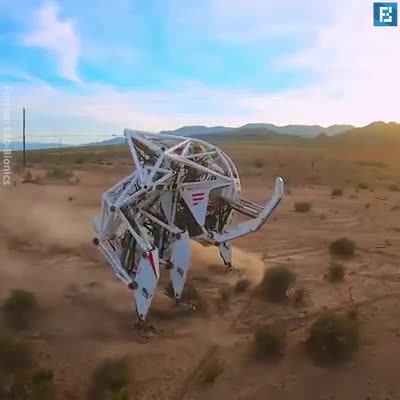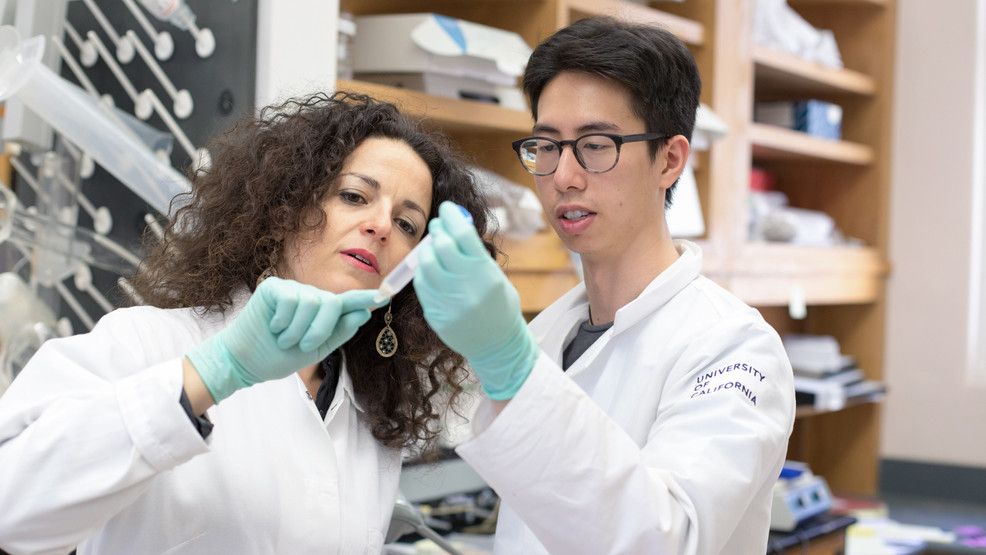Researchers have identified a cancer-causing mutation in the PDGFRA gene that drives cell mutation and growth when activated. The findings have implications for the treatment of a subset of glioblastoma brain cancer.




Dead Cells
It’s an intriguingly microscopic example of pro-social behavior — an adaptation that doesn’t help an individual survive, but does let it use its death to help others, therefore making the entire swarm more likely to survive and reproduce.
“Dead cells are helping the community survive,” University of Texas at Austin professor of molecular biosciences told Live Science.

Here’s a tip.
On the 21 December solstice, the planets will look like one brilliant star as Jupiter’s and Saturn’s 12-and 29-year orbits bring them together. The last great conjunction was in May 2000, but its position in the sky meant it was difficult to see. The great conjunction of 1623 (when Galileo Galilei was still alive) was also hard to spot because, the Perth Observatory explains, it appeared close enough to the sun that it would have been “lost in the sun’s glare”.
“You’d have to go all the way back to just before dawn on 4 March 1226 to see a closer alignment between these objects visible in the night sky,” according to Patrick Hartigan, an astronomer from Rice University in Texas.

WASHINGTON (SBG) — Researchers studying cognitive deficits following traumatic brain injuries have discovered what they say is a revolutionary drug that could provide the cure for aging. The study by the University of California San Francisco has shown promising results among mice, essentially reversing age-related declines in memory. “We went on with this crazy experiment… and were able to return their cognitive function to as if they were never injured,” said Dr.

Another celestial treat to look out for in the run-up to Christmas.
This week Jupiter and Saturn are low in the southwest during the chilly December dusk. When this month began, they were separated by 2.1 degrees.
But in the days that followed, they have been slowly approaching each other; getting closer by about 0.1 degrees each day on their way toward the long-awaited “great conjunction” next Monday evening (Dec. 21). Their inching closer to each other will be further enlivened by the passage on Wednesday and Thursday evenings (Dec. 16–17) of a foreground waxing crescent moon.
Researchers at EPFL have developed an approach to print tiny tissues that look and function almost like their full-sized counterpart. Measuring just a few centimeters across, the mini-tissues could allow scientists to study biological processes—and even test new treatment approaches—in ways that were previously not possible.
For years, mini versions of organs such as the brain, kidney and lung—known as “organoids”—have been grown from stem cells. Organoids promise to cut down on the need for animal testing and offer better models to study how human organs form and how that process goes awry in disease. However, conventional approaches to grow organoids result in stem cells assembling into micro-to millimeter-sized, hollow spheres. “That is non-physiological, because many organs, such as the intestine or the airway, are tube-shaped and much larger,” says Matthias Lütolf, a professor at EPFL’s Institute of Bioengineering, who led the study published today in Nature Materials.
To develop larger organoids that resemble their normal counterparts, Lütolf and his team turned to bioprinting. Just as 3D-printers allow people to create everyday objects, similar technology can help bioengineers to assemble living tissues. But instead of the plastics or powders used in conventional 3D-printers, bioprinters use bioinks—liquids or gels that encapsulate living cells. “Bioprinting is very compelling because it allows you to deposit cells anywhere in 3D space, so you could think of arranging cells into an organ-like configuration such as a tube,” Lütolf says.
There was nothing technical or physical stopping us from having moved on from Apollo to a permanent Moonbase, the development of industries in space and the establishment of the first human communities on Mars.
While in his time the reason “Why?” was derived from war, this time it can be born of hope.
And while in his time he could only comprehend the first small steps, we have the ability to understand what a giant leap this endeavor can offer us and our children.
It really is up to us. We cannot wait for the next Kennedy to set us on our path to the stars.
Now more than ever both the importance and limitations of the global delivery infrastructure are on full display. But while Amazon and others try to speed up last mile delivery using drones, Dash Systems hopes to expedite the middle mile — with military-inspired airdrops putting pallets of parcels down at their penultimate destinations, even in the most inaccessible of locations.
Air-based delivery generally consists of four steps. First, an item is taken from the warehouse to the airport. Second, it goes by well-packed large cargo planes from there to another major hub, say from New York to Los Angeles. Third, a truck or smaller plane takes these to their regional destination, a sorting or distribution facility. Fourth, they go out on the familiar delivery trucks and end up on your doorstep.
It’s that third step that Joel Ifill, founder and CEO of Dash, felt could be improved. With an engineering background and experience building guided bombs for the military, he felt that there was an opportunity to apply some of the military’s point-to-point approach to the commercial sector. Why do you need to land at all?
